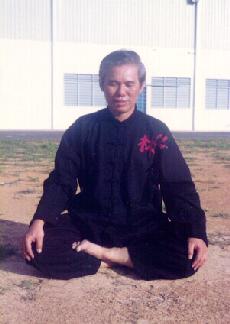INSIGHT AND PRACTICE IN ZEN

Zen
Question
Bodhidharma’s approach to the Way can be classified into two methods. In one of his famed teachings in China, he spoke of these two kinds of entry to the Way. They are
- Entering the Way through Insight – The Instantaneous Entrance to the Way
- Entering the Way through Practice – The Gradual Entrance to the Way
- Accepting Suffering
- Adapting to Conditions
- Seeking Nothing
- To Unite with the Way
-- Sifu Tim Franklin, Shaolin Wahnam UK
Answer
Bodhidharma is regarded as the founder of Zen. Zen originated in India. The Buddha, i.e. Siddharta Guatama, born in 563 BCE although some sources regarded his birth at 480 BCE, was the first Patriarch of Zen in India, and through 28 successors it was passed on to Bodhidharma, who brought it to China.
In China Zen was transmitted from one successor to another until the 6th Patriarch in Hui Neng. Hui Neng did not transmit Zen to just one successor like what was done previously. He had hundreds of successors and he asked them to transmit Zen. Of the 6 Zen Patriarchs, four of them stayed at the Shaolin Monastery. The 6th Patriarch Hui Neng and his teacher, the 5th Patriarch Hong Ren, often returned to the Shaolin Monastery.
Hence, there were two main ways to attain Enlightenment, the one taught by the Buddha, called the Buddha’s method meant for ordinary followers, and the one taught by Bodhidharma, called the Patriarch’s method meant for special followers.
The Buddha’s method is the gradual method. Principally it consists of focusing the mind on one thought, and asking relevant questions until Enlightenment is attained. The Patriarch’s method is the sudden method. Principally it clears the mind of all thoughts. When the mind has no thoughts, Enlightenment, often called the Buddha’s Nature, is attained.
The four practices taught by Bodhidharma are
- Accepting Suffering
- Adapting to Conditions
- Seeking Nothing
- To Unite with the Way.
Because of insufficient understanding, some people think that Buddhism is fatalistic or nihilistic. This is wrong. Joy is a very important aspect in Buddhism. No one could be more joyful than the Buddha when he was a prince in his father’s place. In fact the aim of Buddhism is to find everlasting joy in Enlightenment. But to live in the phenomenal world is suffering when compared to the everlasting joy in Enlightenment.
Adapting to Conditions refers to the Eight-Fold Path as taught by the Buddha. The Eight-Fold Path is a way of cultivation to attain Enlightenment, and consists of right understanding, right intend, right speech, right effort, right livelihood, right effort, right mindfulness, and right concentration.
Seeking Nothing reminds us of Buddha’s Nature. Everyone has Buddha’s Nature. In Western terms, Buddha’s Nature refers to God the Holy Spirit. It is everything there is. In spiritual terms, there is nothing except God. In scientific terms, it is the universal spread of energy. This spread of energy appears to us as differentiated entities because of our senses. Actually it is nothing, or just the universal spread of energy.
To Unite with the Way is to attain Enlightenment, i.e. to be experientially enlightened that there is nothing or just a spread of universal energy without any differentiation. In religions terms it is unity with God, or to attain Tao, or to be liberated.
In Shaolin Wahnam we accept this four-step approach, but we may not give it our top priority. Ours is a kungfu and chi kung school, not a religious or spiritual center. As we still live in our phenomenal world, we use kungfu and chi kung to enrich our phenomenal life. We have good health, vitality, longevity, peak performance and spiritual joys. When we are ready, i.e. when we want to merge with Cosmic Reality, called variously as God, the Buddha, or Tao, this four-step approach, or by whatever name we call our religious or spiritual cultivation, is excellent.
LINKS
